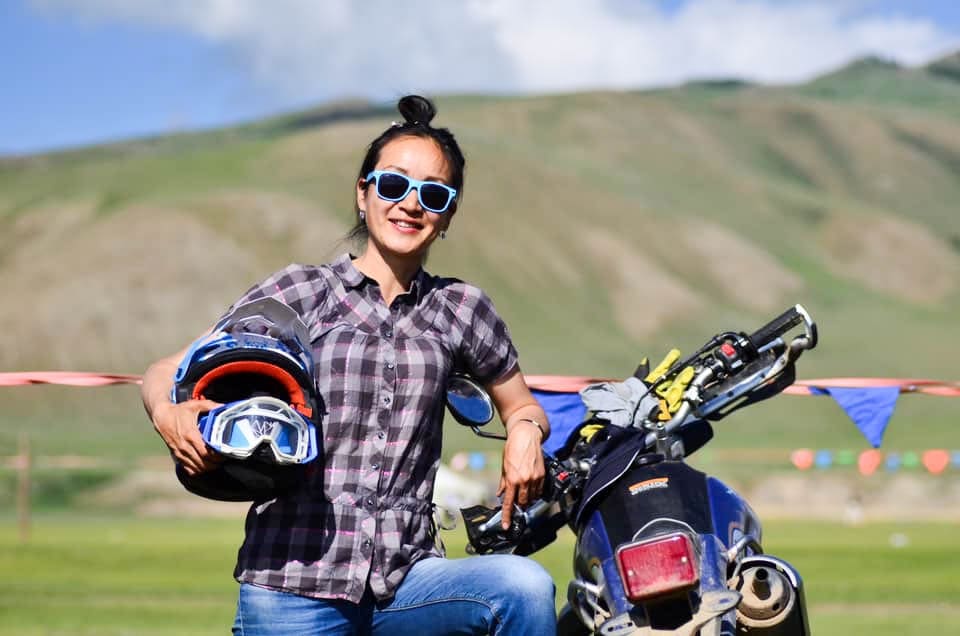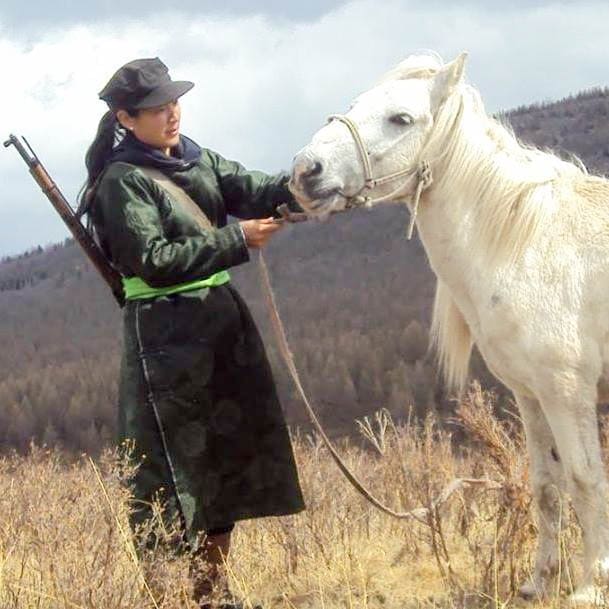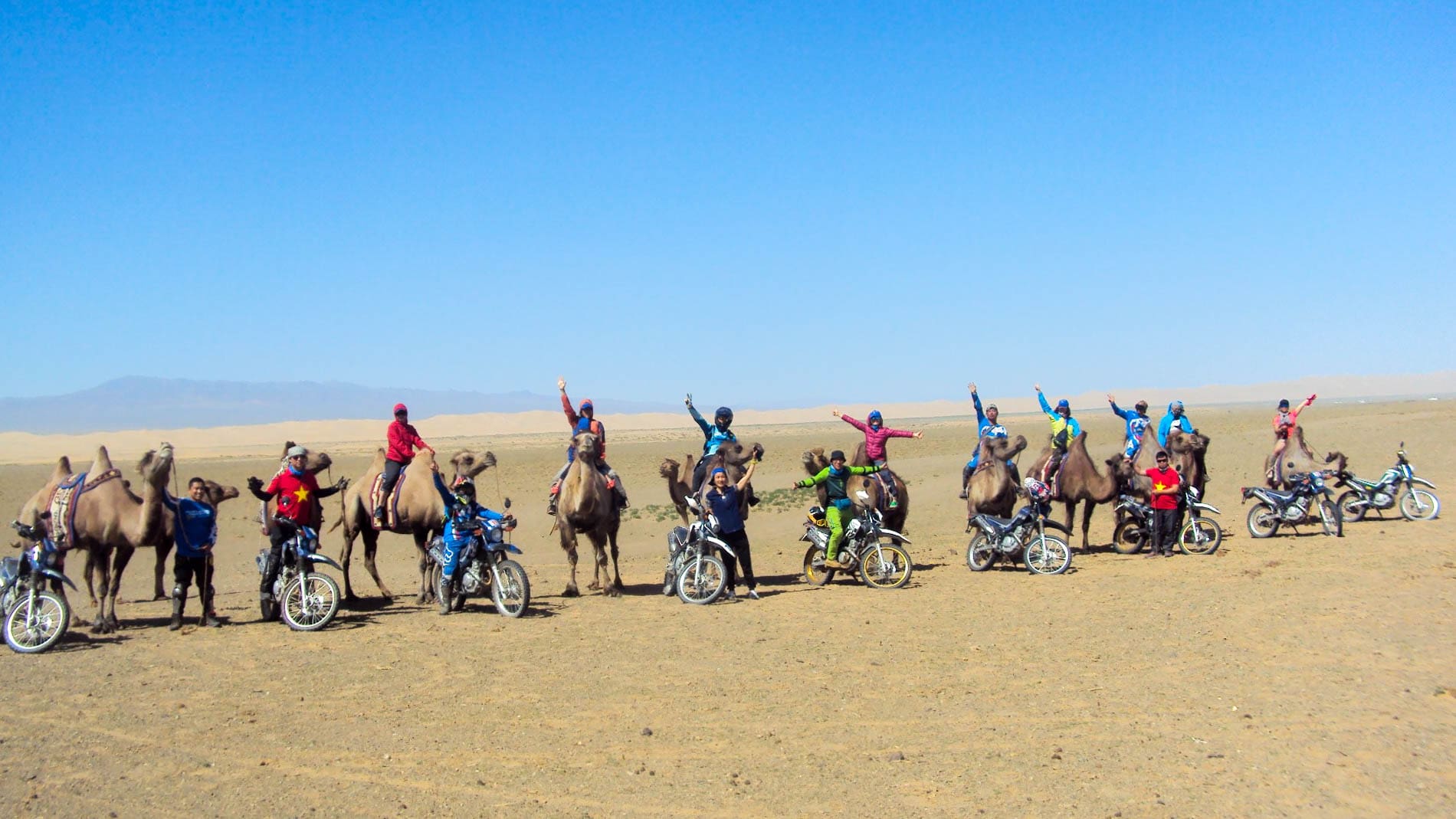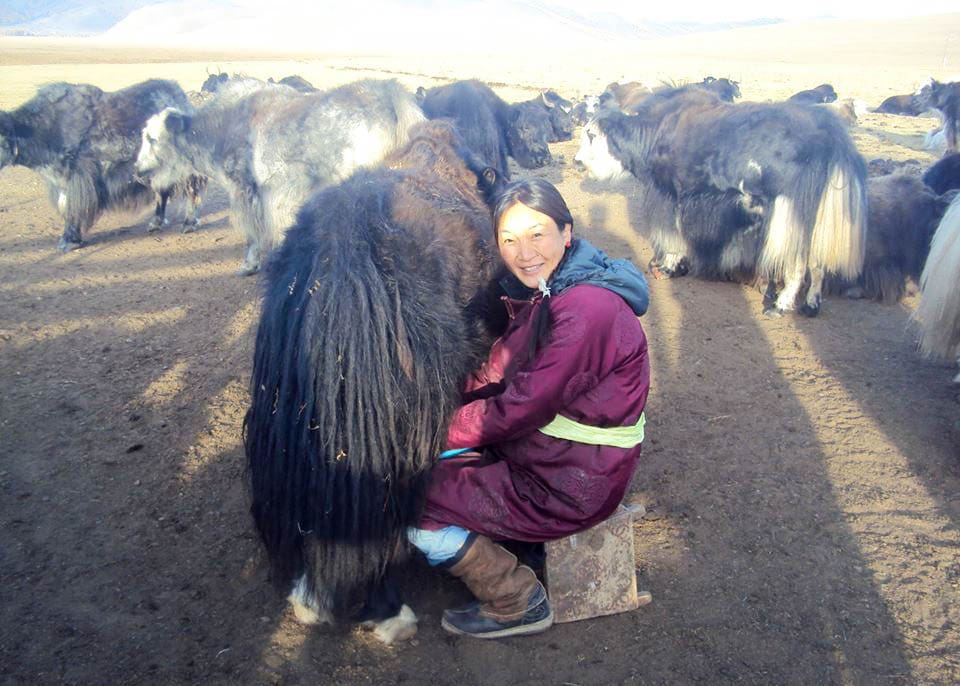In perhaps our most interesting Q&A to date, we got in touch with our local Mongolia guide, Tuul (pronounced “Toll”). The mother of four provides insight into the country’s nomadic lifestyle, traditional vs modern views on gender roles, local attitudes surrounding LGBT life and some of the best destinations and festivals visitors need to check out.

Hi Carl. My full name is Otgontuul, or simply Tuul. I was born in the Orkhon province of Mongolia and lived in the countryside there until I became a student at 18 and moved to Ulaanbaatar.
When I was a student in Ulaanbaatar, I met my husband at 19. We decided to get married when I turned 20, and I permanently moved to the city when I was 25. We have four children.
My grandmother raised me. I spent more time with her than my mom and have a stronger relationship with her than my mom. I still go to the countryside often to help my mommy, especially in the summer. I’ll even send my children to the countryside.
I became a guide in 2013. I started guiding as a way to earn a better salary, but then I realized I loved it. So I began taking evening classes at the local university to become a professional guide.
I love my beautiful country and guiding gives me the opportunity to show off Mongolia to others. It also gives me the opportunity to go to the countryside where I was born. I love to learn from others and share their cultures. Meeting different people and learning from the people from different nationalities makes me feel like I am travelling.
I have been doing this job for eight years now. I got an award for “The Credential Guide” from the Ministry of Tourism last year. 
No. Unfortunately, I do not have a pet golden eagle. But I DO have a golden retriever.
There is a large Kazak population in Mongolia, and the Golden Eagle Festival is a Kazak festival. Mongolians such as myself, only participate in the Golden Eagle Festival as travellers. The Golden Eagle Festival—a traditional bird-watching ritual—was officially declared a UNESCO Intangible Cultural Heritage of Humanity in 2010. In the entire world, Mongolia has the best preserved birdwatching practices.
Personally, I like the eagle festival and respect it, but I prefer Naadam and Tsagaan sar.
Regarding Naadam, the accent is on the first syllable. So it’s NOT Nad-aaam. The verb “naad” means “play” or “enjoy” in Mongolian.
To be honest, my favourite festival is Tsagaan sar, the first day of the year by the Lunar Calendar. To me, “Tsagaan sar” means spring is coming. However, from my herder experience, spring is the most difficult season. Even harder than winter! But I love spring because I like the feeling that the ground is thawing and inviting warmth.
When I was a child I did lots of chores. And when Naadam or any festival was happening I mostly had to stay home to cook and prepare food for the adults who were visiting for Naadam.
In Mongolia, almost everyone raises their children while moving around. And yes, it is quite a big job. But we just get used to it. There is no choice, it is a part of our way of life.
Moving can take between one to three days. It depends how far the family is moving. If two places are close together, it could just be a one day job. But even if the family is moving far, it’s still not that big of a problem. Gers—our dwellings—are like a simple puzzle. They are easy to move and family members do not keep lots of stuff which makes things easier.
Each family is different and how often they move depends on the needs of the family. Some families just move twice a year and mostly live in the centre soum (centre district) in winter, and in the countryside as herders in the summer. Normally nomad families move four times a year, following good pastures. And others move even more than four times. So it really depends on families, the weather and and the quality of the pastures.
For me, When I was young we used to use an ox to move, but now almost every family uses a car. The only exception are those who live in isolated areas where cars can’t access.
Even though I live in the city now I often go to the countryside to help my mommy. My children, husband and I go to the countryside in spring or summer. 
Countryside life and city life are different. In the city, families tend to be small. But countryside families still tend to be larger. But both city and country families are having less children than previous generations.
Recently, young people—especially those who have gone abroad to travel and study—think work should be equal, regardless of gender. There is a growing trend that housework and childcare are not just women’s jobs. And that women should have the same salaries and positions as men.
Old tendencies are still strong, especially in rural areas. Such as men not cleaning the house or taking out the trash, women taking care of the children and cooking. Traditionally, only men herd horses outside the home.
I also think the laws of nature such as women giving birth, are why women have to take care of their children at home. During this time, the husband still needs to work. As a result of these factors, there is still a tendency for men to work outside of the house and women to stay at home.
Today, most Mongolians live in cities. And more than half of the population lives in the capital city, with more than 60 percent of the population living in urban areas such as aimag centres and soum centres. Although most people are now sedentary, there is still a nomadic lifestyle in most areas that affect behaviour, attitudes, and food.
So I would say that old ideas are still strong but we’re in the midst of growing new attitudes.
Mongolia is famous for quite a lot today.
For one, the Gobi Desert, where rock formations date back over 70 million years. The area has yielded the richest collection of dinosaur remains in the world.
Definitely nature. Beautiful untouched natures, snowy mountains, many species of bird, Siberian ibex, snow leopard, Gobi bear and wild bactrian camel. And of course our taki, also known as Przewalski’s horse.
Religion. The majority of Mongolians practice Tibetan Buddhism but Mongolians also still practice Shamanism. Islam is the religion of the Kazakh and Turkic people who live in the west.
Festivals. We are famous for Naadam, the largest festival, which we have been celebrating since the Xiongnu period, the first state of Mongols. The largest Naadam takes place in the capital, but smaller Naadams are held in every community across the country. We also host smaller festivals such as the ice festival, camel festival, yak festival etc.
Culture. Living nomadically is integral to our sense of national identity. We keep the culture moving with our livestock as the seasons change and living in traditional ger.
Finally, we are famous for our ethnic groups. We have 21 unique ethnic groups.
The most important thing for me personally, is I am just proud of being an independent country with a strong democracy. We maintain all of our culture and traditions even though Mongolia is between two giant countries. 
Personally I like to show places with less travellers. For example places like the deep Gobi, the eastern side of Mongolia, the big fields and antelopes in Dornod, and some less visited lakes in Sukhbaatar. I love showing off the Uvs province, the Bayankhongor province, the beautiful natures of Zavkhan province, and the Khentii province. I love historical places or archeological places. But I love the route of Out Adventures’ itinerary—it visits some incredible places in my country.
I love Gobi. Gobi is the opposite of where I grew up. I like the Gobi atmosphere and just the feeling I get when I’m there.
When I was young I did not eat meat in the summertime, except dried meat. My grandmother said we could not eat hot and heavy meat in the hot summer. To this day I still feel heavy if I eat meat in the summer. But generally my favourite food is boiled meat, especially sheep or horse meat.
There are many different Mongolian dishes. Khorhog, boodog, shorlog, boiled intestine and boiled head and feet, fried liver with tail, rice boiled in blood etc. I love all of those dishes. It really depends on travellers if they want to experience new dishes really.
Last year I guided a group that wanted to visit and have dinner with a nomadic family. The family prepared a special dinner for them including boiled heads and feet of sheep with vegetables. Some of the clients really enjoyed the local dish, but others found the food really challenging. Looking at heads or intestines boiling in the big pot is not an enjoyable thing for some clients. Many people in the group had trouble with the head meat, not to mention squeezing such a large group of people into a traditional ger.
Tourist camps do not serve really rural Mongolian dishes, because most of the travelers can not eat or do not like it. But they serve both Monoglian style dishes as well as more modern dishes (European).
But if the group likes to have new dishes of course we can suggest our clients local Mongolian food.
This is a very popular drink. It is just beer to us. Right now I am writing to you and drinking airag. August and autumn are when you’ll find the best airag. I like it very much. It has an alcoholic and sour taste, strong smell, but it’s milk.
Definitely, we will taste airag and I hope we will see how mares are milked and airag is made. 
Mongolian society is not entirely ready to accept such things openly. I haven’t seen homosexuals walking openly like holding hands in the streets here yet. Although we have moved to a democratic society since the 1990s, we still have some of the same old patterns, especially in rural areas, where we find this topic very strange. Unfortunately, some people strongly disagree with LGBT people.
Personally, I saw a gay couple for the first time when I visited England four years ago. This was the first experience in my life.
I admit the first time I saw a gay couple in the street, I was shocked and confused if one of them was a girl.
But a few days after I was invited by a different gay couple to visit their family and meet their sons. I was nervous (in a good way) and was thinking about what I would talk to them about, how they look like etc. The couple was wonderful and very open. They adopted two boys. I saw their album, wedding pictures and we talked about their life being gay. That was my first experience, but then the next year I guided a lesbian couple and a gay couple.
I just want to note that all of my answers are just my opinion. In many ways I am a proud Mongolian, but in other ways I am very different from other Mongolians. So my opinions may be different than most Mongolians you’ll meet here.
Interested in joining Tuul in Mongolia?
Out Adventures’ all-gay Mongolia adventure visits Ulaanbaatar, the Gobi Desert and Bayan Ulgii. It also aligns with the country’s famous Golden Eagle Festival.
*This interview has been edited for clarity.
All photos courtesy of Tuul and Big Mongolia Travel.
Featured Posts
Our all-gay Mongolian adventure will see us traverse the rugged countryside like Genghis Khan at the height of the Mongol Empire. But to reach the region's more remote destinations we'll need to slumber in traditional gers (also called "yurts"). Read on for everything you need to know about this unique 'glamping' experience. Read More
Sweat and schlep on one of Out Adventures' epic international Gay Hikes. From the Peruvian Andes to exhausting Everest Base Camp. Read More
Out Adventures' ultimate gay guide to purchasing hiking boots. Read More
Many gay solo travellers are nervous to join a gay group tour. Out Adventures answers the most common concerns. Read More
